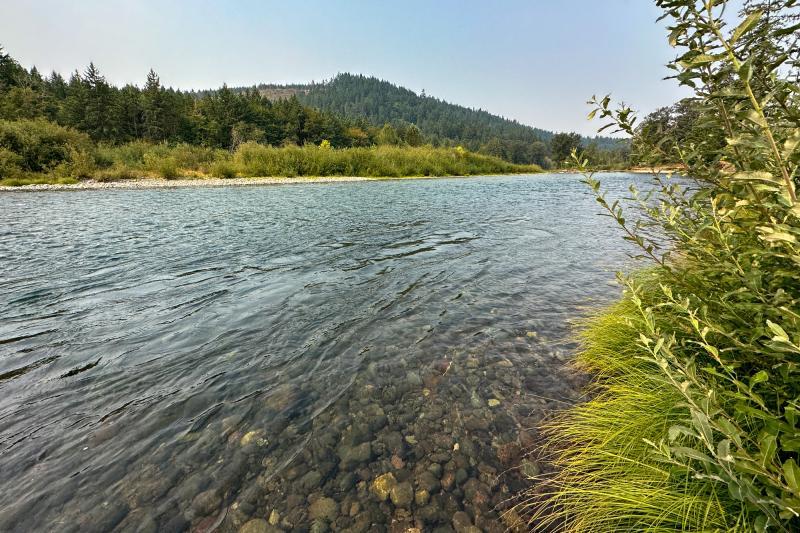
Reestablishing connections for fish and tribes on Oregon's North Santiam River
by NOAA Fisheries 16 Aug 2024 21:14 UTC

North Santiam River © Jodie Robinson / NOAA
With $710,000 in funding from NOAA, the Confederated Tribes of the Grand Ronde will remove barriers to the passage of threatened salmon and trout species on their land.
The North Santiam River is a high priority for the recovery of threatened Upper Willamette River spring Chinook and Winter Steelhead. Large dams upriver impaired natural stream processes, decimating fish populations. Development, shoreline armoring, and the disconnection of floodplains from the river damaged habitat key for salmon spawning and rearing juvenile fish.
To help address these challenges, NOAA’s Office of Habitat Conservation awarded the Confederated Tribes of the Grand Ronde $710,000 in funding through the Bipartisan Infrastructure Law and Inflation Reduction Act to restore fish habitat on a tribally-owned conservation property.
The Confederated Tribes of the Grand Ronde will replace two culverts and remove two earthen berm obstructions to reconnect part of the North Santiam River to its floodplain. The project will allow the threatened Chinook and steelhead to access important side channel habitat. The work will also benefit Oregon chub, Pacific lamprey, and Northwestern pond turtles.
"This work is going to open up historic habitat," says Lindsay McClary, project manager for the Chankawan Side Channel Restoration Project. "Right now, salmon and steelhead can't access this side channel. Side channels are important rearing places for juveniles, and during high flows, they provide resting areas for the adults."
"The North Santiam is considered a 'core population' for the Upper Willamette River spring Chinook, and was one of the most historically productive subwatersheds in the Willamette," says Regina Southworth, ERT contractor and Restoration Ecologist for the NOAA Restoration Center. "Fires in 2020 burned 46 percent of the North Santiam watershed, damaging the ecosystem. Opening the side channel will provide slow moving, cooler waters with intact riparian habitat."
Restoring the floodplain and bringing back migratory fish is of critical importance to the Confederated Tribes of Grand Ronde, which includes more than two dozen individual tribes. They were forced off their traditional lands and on to a reservation in Grand Ronde in 1857. Over the years, the Tribes lost access to most of the reservation. Without land, they could not sustain their traditional livelihoods and practices. In recent decades, they have reacquired some of their historic land, including the land for this project. "This particular area was once the home of the Santiam Band of the Kalapuya and they typically lived here in seasonal rounds, coming into the area when fish runs were plentiful," says McClary.
The Tribes plan to open up additional barriers on their property.
Additional project partners include:
- U.S. Fish and Wildlife Service
- Oregon Department of Fish and Wildlife
- North Santiam Watershed Council
- Marion County Soil and Water Conservation District
NOAA's Office of Habitat Conservation is reinvigorating efforts to restore threatened salmon and trout species in Oregon's Willamette River watershed. This is one of
four related restoration projects being funded under the Bipartisan Infrastructure Law and Inflation Reduction Act in this area.